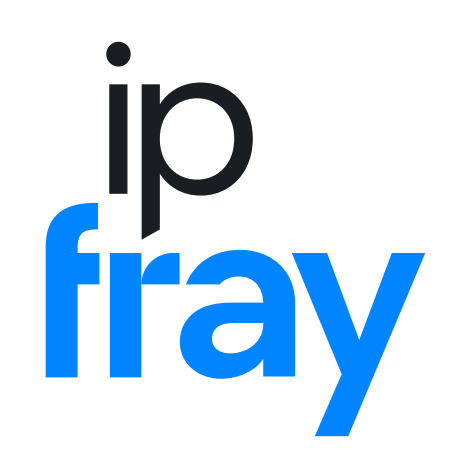Context: There are a few patent cases related to gallium nitride (GaN) pending in different jurisdictions, typically with China’s Innoscience on the receiving end (June 26, 2024 ip fray article).
What’s new: On Friday (July 5, 2024), the United States International Trade Commission’s (USITC or ITC) Administrative Law Judge (ALJ) Clark Cheney rendered his initial determination (ID) in the investigation of Efficient Power Conversion’s (EPC) Sec. 337 complaint against Innoscience. The public can only see a minimalistic summary so far. ALJ Cheney identified a violation with respect to U.S. Patent No. 8,350,294 (“Compensated gate MISFET and method for fabricating the same”) but not with respect to a second patent.
Direct impact: Innoscience can, and obviously will, seek a Commission review of the ALJ’s ID. Its better shot, however, may be the Patent Trial & Appeal Board (PTAB) of the United States Patent & Trademark Office (USPTO), which instituted an investigation of the ‘294 patent on March 20, 2024, identifying an obviousness issue over the combination of two prior art references (plus Innoscience has an obviousness argument combining the two references the other way round, a theory that the PTAB didn’t even reach). Theoretically, EPC can still try to prevail on U.S. Patent No. 8404508 (“Enhancement mode GaN HEMT device and method for fabricating the same”). Either party will face an uphill battle at the ITC as the ID is, as far as the outcome indicates, consistent with the views of the Office of Unfair Import Investigations (OUII, or “ITC Staff”), which participated in these proceedings as a neutral party. And to turn things around for the ‘508 patent, EPC apparently has not only the ALJ and the ITC Staff but also the PTAB’s claim construction against it. An inter partes review is pending over that one, too.
Wider ramifications: Innoscience has no choice but to defend itself, and appears to be a fairly resilient defendant that stands its ground and makes bold public statements. At a later stage the Chinese side may allege that U.S. government agencies are helping EPC, a company from El Segundo (Greater L.A. Area), against a Chinese rival, but at this point the bigger question is whether EPC will get any serious leverage at all.
Here’s the text of the public notice filed by ALJ Cheney (who is also the ITC’s Chief ALJ, which does not give his rulings on particular cases more weight though) on Friday:
NOTICE OF INITIAL DETERMINATION ON VIOLATION OF SECTION 337
(July 5, 2024)On this date, and pursuant to the Notice of Investigation, 88 Fed. Reg. 42756 (July 3, 2023) (“Notice of Investigation”), and 19 C.F.R. §§ 210.10(b), 210.42(a)(1)(i), I issued the final initial determination in this matter. As explained in that determination, I have determined that no violation of section 337 of the Tariff Act of 1930, as amended, has occurred in the importation into the United States, the sale for importation, or the sale within the United States after importation of certain semiconductor devices, and methods of manufacturing same and products containing the same, based on the alleged infringement of U.S. Patent No. 8,404,508.
I have also determined that a violation of section 337 of the Tariff Act of 1930, as amended, has occurred in the importation into the United States, and the sale within the United States after importation, of certain semiconductor devices, and products containing the same, based on infringement of U.S. Patent No. 8,350,294.
SO ORDERED.Clark S. Cheney
Chief Administrative Law Judge
The (extended) target date for the ID was actually July 2, 2024, thus before — not right after — Independence Day. But for such a minor delay of only two business days, and considering that many people in the U.S. took off the 5th so they had a four-day weekend thanks to Independence Day, it was a pragmatic decision that no formal extension of the target date (which would again have theoretically required a Commission review) was ordered.
The target date for the Commission itself is November 4, 2024, and theretically could be extended by a couple of days now as a result of the slightly delayed ID.
The two prior art references that led the PTAB to institute the investigation of the 294 patent are
- US Patent Publ. 2008/0087915 A1, published April 17, 2008. Ex. 1006 (“Uemoto”) and
- US Patent Publ. 2007/0164315, published July 19, 2007. Ex. 1005 (“Smith”).
With Uemoto as the starting point, the PTAB felt there was a strong likelihood of invalidity. Innoscience argued one could also start with Smith and would arrive at the same result, but the PTAB didn’t have to address that theory as it had enough in place to institute an investigation.
The parties are also litigating in U. S. district court, and Innoscience challenged some Chinese EPC patents (some claims of a key EPC patent were upheld in China (May 6, 2024 EPC press release)).
At this point it’s far from certain that EPC will accomplish anything. It started with four patents in the ITC and dropped two of them along the way. Of the two remaining ones, the ‘508 patent appears very difficult to prevail on. It now all comes down to the ‘294 patent and, most likely, what the PTAB does about that one.
